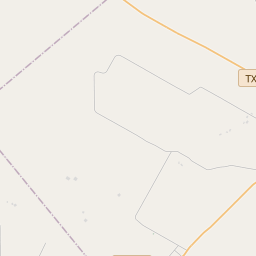Lithuanians in Texas
Historical marker location:






Among the many European immigrants arriving in Texas in the mid-19th century was a small group of Lithuanians who settled in the Yorktown vicinity of De Witt County. Due to their eventual assimilation with the numerous German immigrants in the area, the Lithuanians and their contributions to the history of this region were overlooked for generations.
Records reveal that the first Lithuanian family to settle in this area probably was that of David and Dora (Scholze) Stanchos. They arrived about 1852, making them among the earliest documented Lithuanian immigrants to America. By 1874 they were joined by about 70 more immigrants, most from the province of Gumbinnen in what was then part of east Prussia. Leaving their homeland for a variety of religious and political reasons, the Lithuanians arrived in Texas primarily through the ports of Galveston and Indianola.
Establishing farms in the area, the Lithuanians became American citizens and contributed to the history and culture of this area. Men from the community fought on both sides of the American Civil War. A small graveyard south of Yorktown known as Jonischkies Cemetery contains the interments of many of these early settlers
As one of the most visible programs of the Texas Historical Commission (THC), historical markers commemorate diverse topics in Texas history, including: the history and architecture of houses, commercial and public buildings, religious congregations, and military sites; events that changed the course of local and state history; and individuals who have made lasting contributions to the state, community organizations, and businesses.
The state of Texas was once an independent country known as the Republic of Texas. It gained independence from Mexico in 1836 and was a separate nation until it was annexed by the United States in 1845.
In 1827, the area that is now DeWitt County was incorporated into the Mexican state of Coahuila y Tejas. Shortly after, American settlement began in the region, with empresarios such as Green DeWitt and Martín de León playing significant roles. DeWitt, for whom the county is named, received a land grant in 1825 and played a vital part in bringing Anglo-American colonizers to the area.
DeWitt County saw significant growth during the Texas Revolution in the 1830s. The Battle of Gonzales, the first engagement of the revolution, occurred just outside the county's boundaries. The county itself became a site of conflict during the revolution, with the Battle of Ethel's Woods and the Battle of Gonzales River Bridge taking place within its borders.
After Texas gained independence from Mexico, DeWitt County was officially established in 1846. The county seat was initially Gonzales, but it was moved to Cuero in 1876. Throughout the late 19th and early 20th centuries, DeWitt County experienced economic growth due to industries such as ranching, oil, and agriculture.
Present-day DeWitt County continues to thrive as a center for agriculture, oil and gas production, and tourism. The county is known for its rich historical sites, including the Gonzales Memorial Museum, which houses artifacts from the Texas Revolution, and numerous ranches that showcase the area's strong cattle industry. DeWitt County's history is a testament to the resilience and determination of its early settlers and remains an essential part of Texas's broader historical narrative.
DeWitt County Timeline
This timeline provides a glimpse into the major events and milestones that have shaped the history of DeWitt County, Texas.
- 1827: DeWitt County is established as a part of DeWitt's Colony in Mexican Texas.
- 1840: The Battle of Plum Creek takes place in DeWitt County during the Texan Revolution.
- 1846: DeWitt County becomes a part of the newly formed Republic of Texas.
- 1848: Texas becomes a state of the United States, and DeWitt County remains a part of it.
- 1850: Population growth leads to the establishment of the county seat, Cuero.
- 1870: The Gulf, Western Texas and Pacific Railway reaches Cuero, increasing trade and transportation opportunities.
- 1874: Cuero is officially incorporated as a city.
- 1893: Oil is discovered in DeWitt County, leading to economic growth and development.
- 1923: A disastrous fire destroys much of downtown Cuero.
- 1941-1945: DeWitt County contributes to the war effort during World War II.
- 1960s-1970s: DeWitt County experiences a decline in population and economic activity.
- 1990s-present: DeWitt County experiences a resurgence in oil and gas production, leading to economic growth.